December was a flurry of activity on the homestead. We continued to build new structures, planted a late fall garden, expanded our fruit tree collection, and weathered a hard frost.
Click the links below for shortcuts to each section.
- Journal Entries Weeks 1 & 2
- Journal Entries Weeks 3 & 4
- What’s Blossoming Now
- Harvest Summary
- Resources
- What’s Next
- What do You Think?
Journal Entries Weeks 1 & 2
With the darkening days of winter approaching, most of my time spent in the garden was on the weekends. A much longer commute to and from the city meant that most evenings I arrived home just as the sun was setting.
The first weekend of December, I did a year-end inventory of what was growing across the property. I had 8 varieties of annual vegetables growing, just over a dozen types of flowers in blossom, and 16 types of trees and perennial plants that would produce food. Considering that just six months ago our property was an abandoned cattle pasture, I was thrilled with what we had already accomplished establishing our homestead.
The following weekend, I dug into my seed stash and pulled out aging seeds leftover from previous years. There was space left in the two established raised beds, so I planted some golden beets and spinach seeds dated for 2019, and succession planted more carrots from seeds I had purchased a month ago.
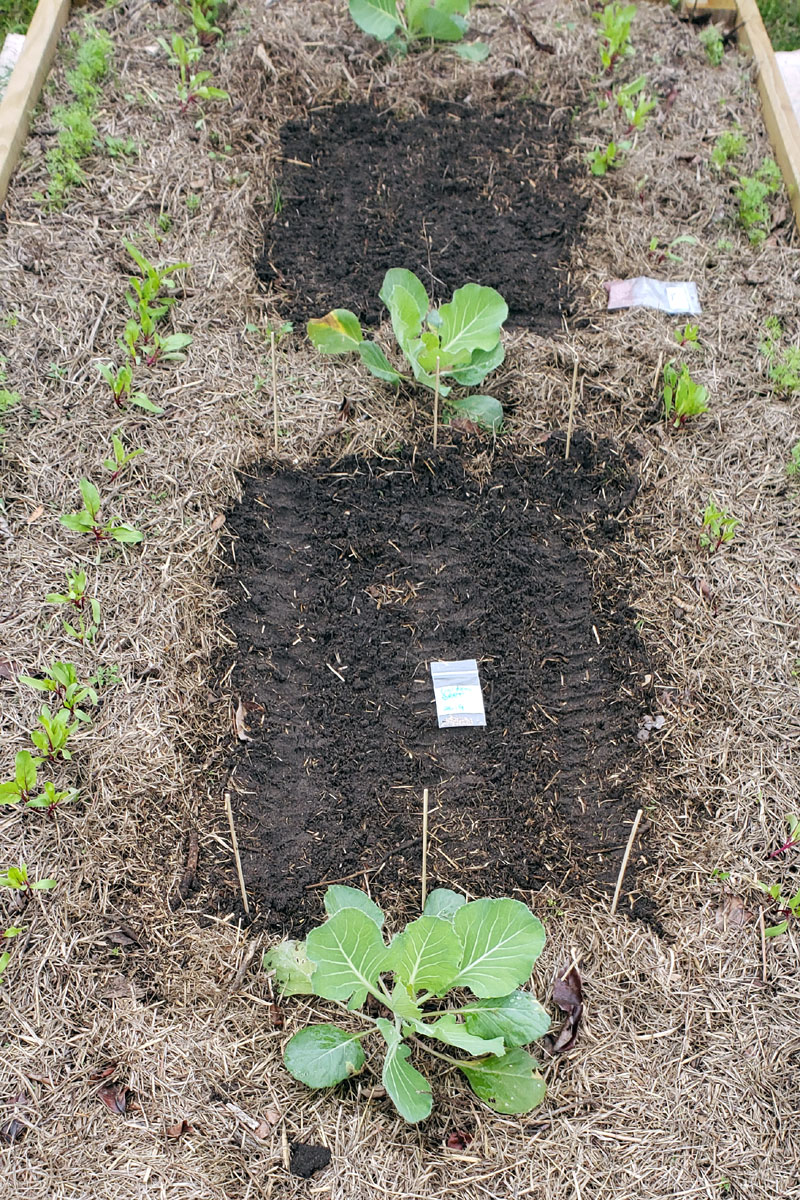
I created a small row of peas from my last package of sweet peas, and spread some onion seeds from 2020 where the Seminole pumpkins had just finished growing.
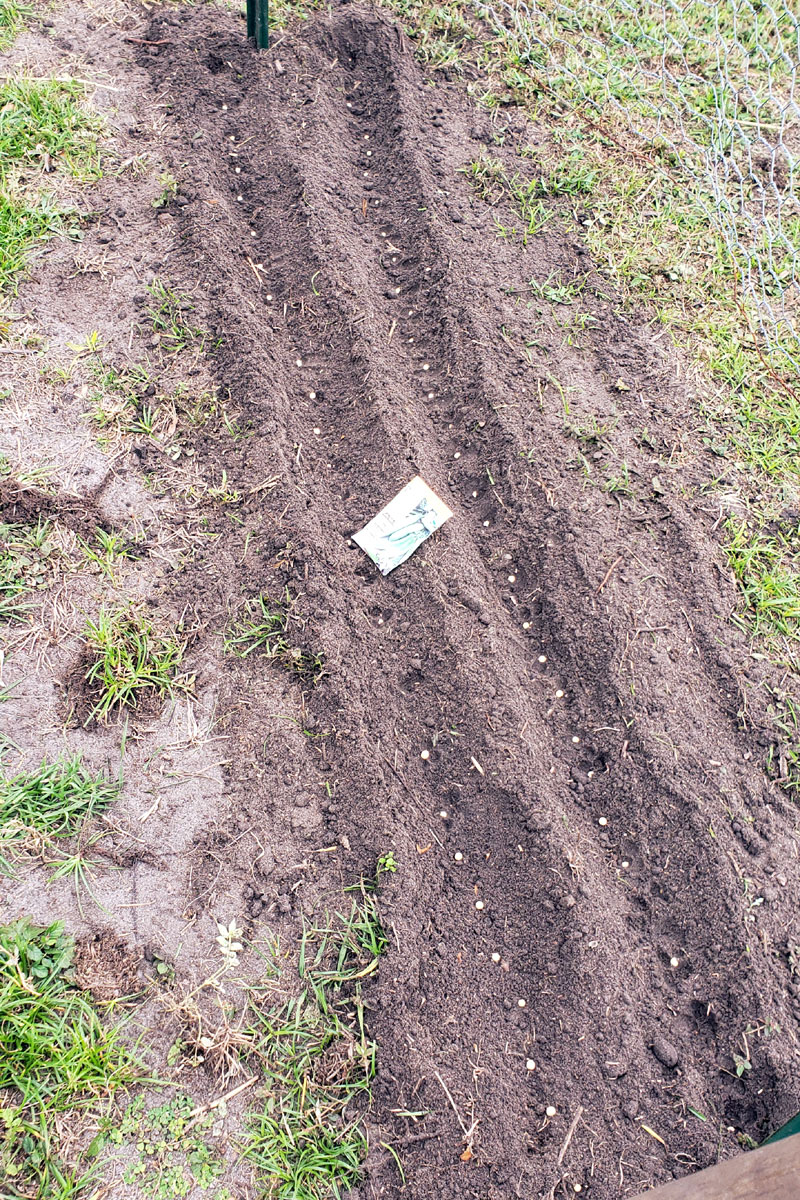
I also planted the last of my cabbage seeds from 2020 in another raised bed we had built back in November.
Journal Entries Weeks 3 & 4
December 17th, we visited a local nursery and purchased three apple trees. We brought home two Dorsett apples and one Anna apple. We needed two varieties to ensure pollination. These two varieties have low chill-hours and are suitable for our climate. I’ve added a link in the Resources section to a chill-hours calculator.
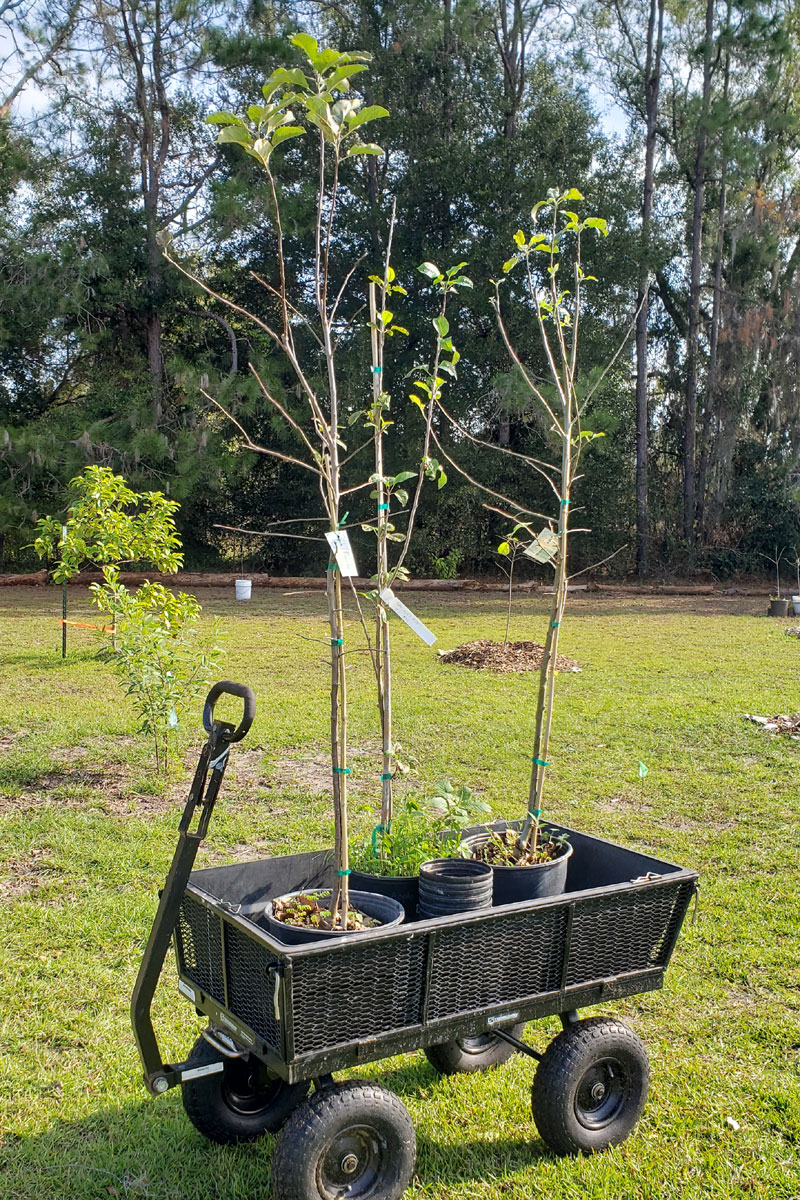
We also chipped into mulch some pine and oak that had been cut earlier this year as we developed and cleared the homestead.
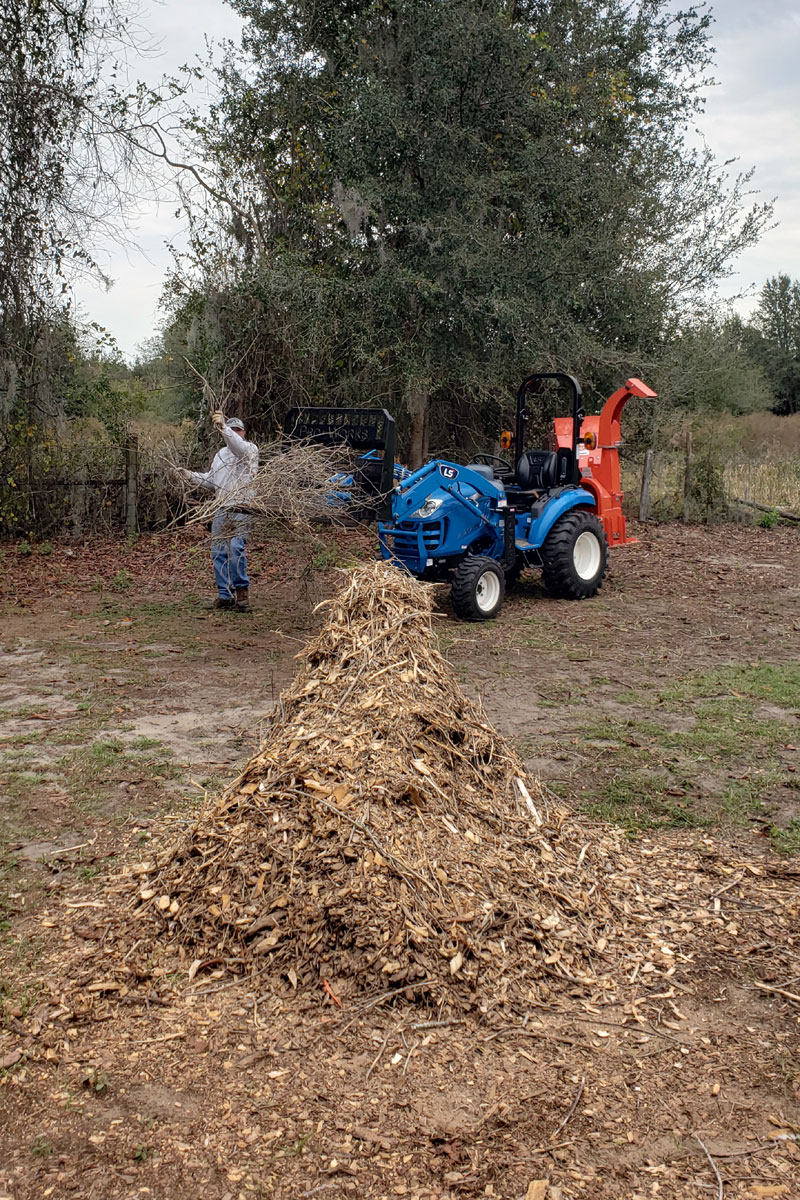
The Big Freeze of 2022 Hits!
December 23rd, I covered everything I could as a major cold front approached. Moving blankets, sheets, and a few tarps were pulled out of storage and we wrapped up the raised beds and dragon fruit trellis. The potted plants under the oaks out front, and the few trees we still had left to plant were taken into the garden shed. I used many of our white 5-gallon buckets to cover the smaller star fruit trees, rosemary, pineapples, and the cabbages.
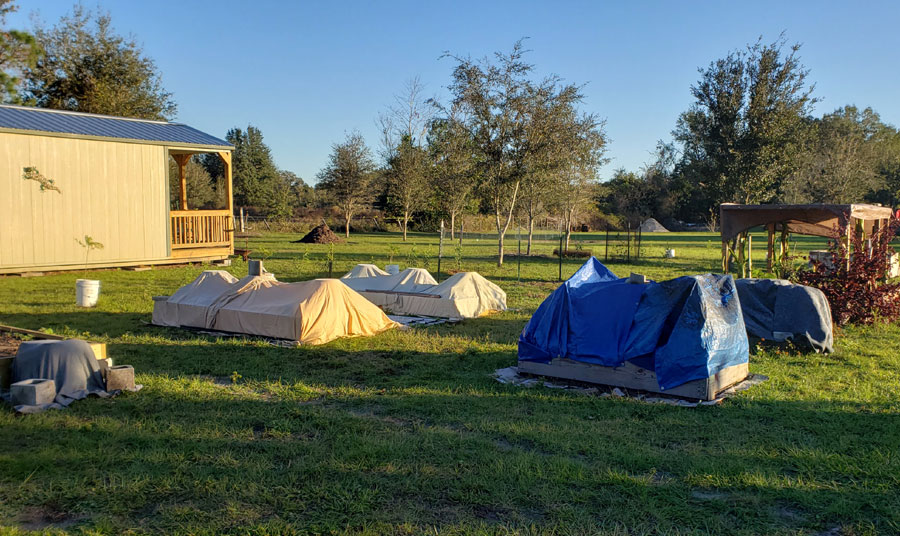
The cold hit hard for three nights in a row.
Late morning of the 26th, we pulled back the blankets and counted our losses as many Floridians did that weekend. Thankfully, everything in the raised beds survived.
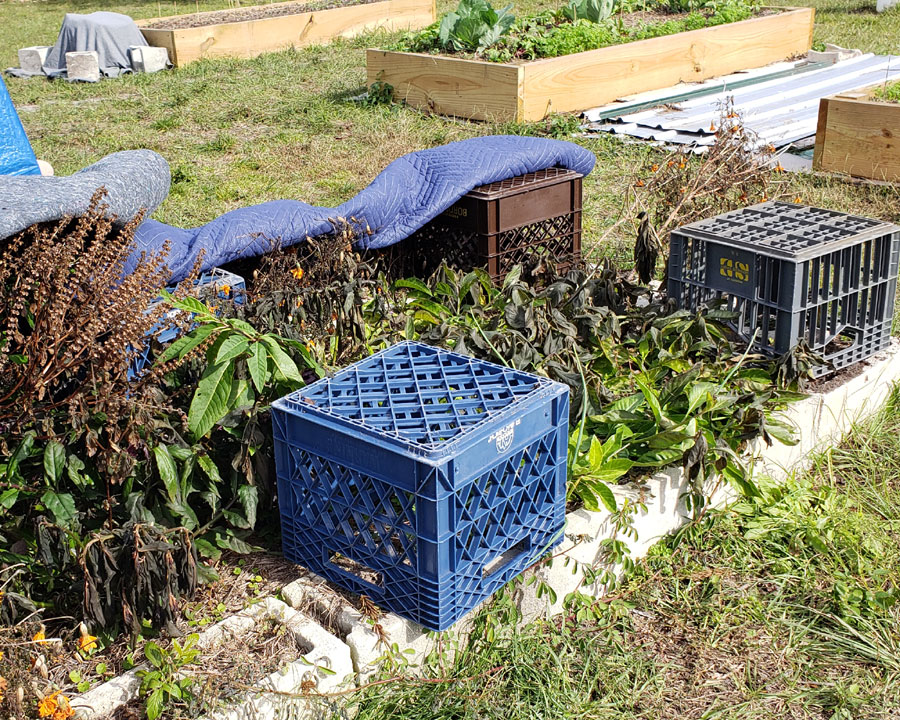
Some of the dragon fruit looked damaged, but I wouldn’t know for sure until weeks later just how bad the damage would be. The moringa trees and pigeon peas looked dead, but I knew they could come back from a freeze.
Most of the avocado tree leaves were brown, but there were signs of green within the canopies so I wasn’t too worried. Our biggest loss was all the papayas. It was too many nights in a row below freezing. A week after the freeze, they started rotting at the base. They would soon become part of the forest garden floor.
Overall, the freeze wasn’t too bad. We’re learning as we go. The temperatures here are on average about ten degrees cooler during the overnight than where we used to live in the Orlando suburbs. The USDA Hardiness Zone map puts us on the line between 9a and 9b. With the temperatures we’ve seen and compared to previous places we’ve lived; I’d say we’re a Zone 9a now.
New Year’s Eve we planted the last lemon tree. This one we decided to include in our back yard landscape and planted it near the wildflower garden.
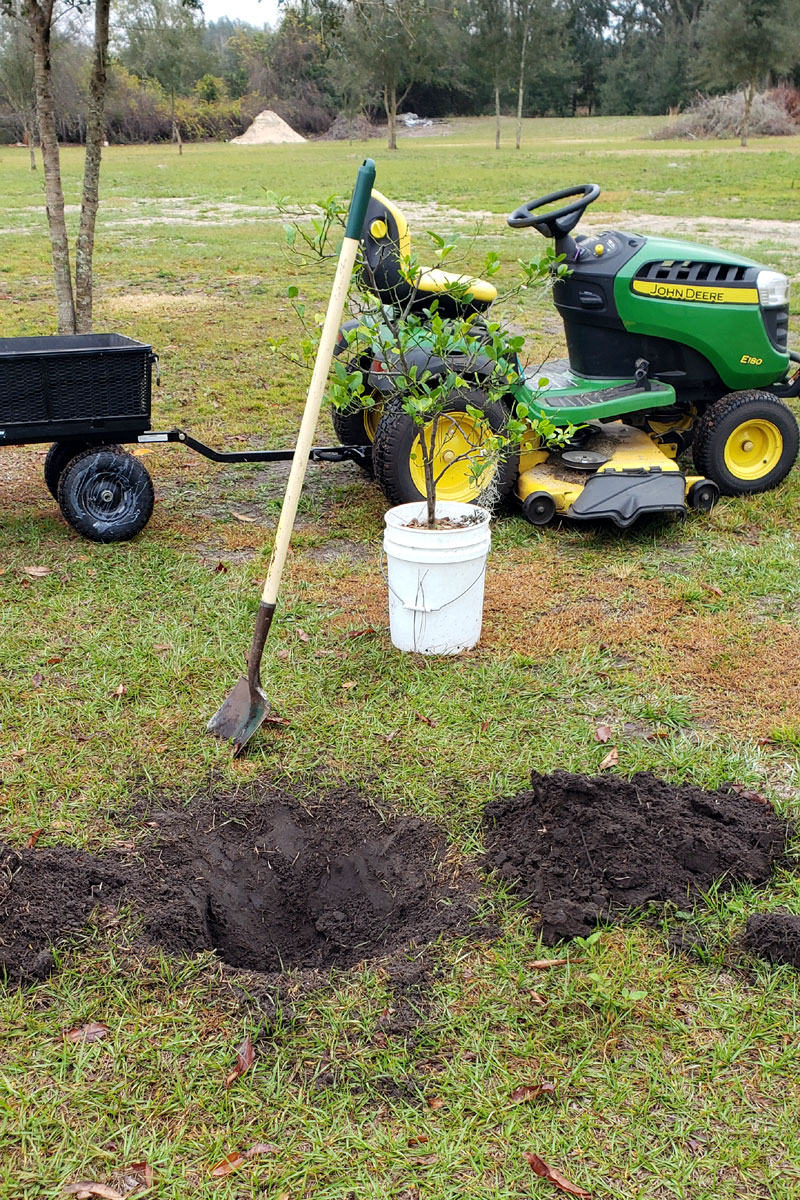
I also dug up the ginger and turmeric I had in a large flower pot. There was just enough ginger to replant. I saved 4 turmeric roots for cooking and replanted the rest for another year of growth.
We ended the year with a campfire in our new fire pit we had just built, snacking on s’mores, and watching the neighbors shoot off fireworks. Conversation centered around all we had accomplished and what a fire cracker of a year it had been!
From living in the suburbs of southern Orlando to a rural homestead in Central Florida’s cattle country, it’s been an exciting year! Thank you for joining us on our homesteading journey and following our garden journal.
What’s Blossoming Now
- Cranberry Hibiscus
- Marigolds
- Wildflowers
- Seminole Pumpkin
- African Blue Basil
- Christmas Cactus
- Papaya
- Pigeon Peas
- Loquat
Harvest Summary
- Seminole Pumpkin
- Cranberry hibiscus leaves and seeds
- Okinawa spinach
- Longevity spinach
Resources
- Apple Pollination
- Find Your Chill Hours
- My Favorite Food Forest Resource this Winter
- HomesteadByDesign – My Etsy Shop – Gardening Printables and more!
What’s Next
So, what is next for O’Mara Acres in 2023?
- The food forest build continues.
- Additional raised beds will be built to grow more of our own food.
- The last length of perimeter fencing will be completed.
- New-to-us veggies, fruits, and flowers will be planted.
- I’ll start growing plants for seed stock to sell in my Etsy shop.
- The harvests will be larger – look for blog posts about food preservation and cooking from scratch.
- Maybe dogs on the homestead?
- How about a chicken coop before 2024?
There’s so much to plan and do when building a new homestead. If you’d like to learn how we manage it all, from making goals to implementing plans, check out my Frugal 5 Series.
If you’re starting a new garden, read: Set Your Gardening Goals.
What Do You Think?
The year 2023 is already underway as I complete this blog post. Many people talk of resolutions and goals this time of year. While the idea has become cliché in our society, I believe it’s good to set aside a time once a year to look at your overall goals.
This month, consider your goals for your garden. What are your goals to grow more food for yourself?
Thanks for joining me on my gardening journey!
Alisa